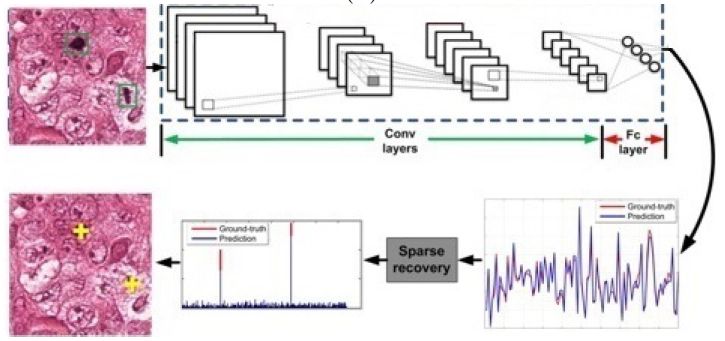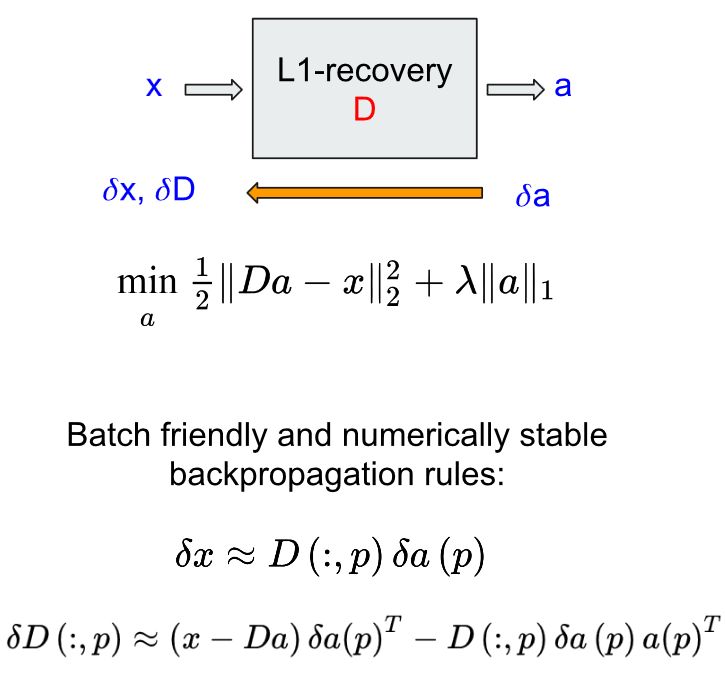Cell Detection with End-to-End CNN and Sparse Coding / Compressed Sensing

Fig. 1: End-to-End CNN and Sparse Coding

Fig. 2: Differentiable Sparse Coding
Cell detection is a significant task in microscopy imaging. Cell detection is a point object detection problem. So, its mechanism differs from general object detection. Existing deep learning-based method for cell detection are based on discretization of space and regressing on the discretized space. We offer an alternative in our approach. Instead of discretization we compress sparse cell locations and ask a convolutional neural net (CNN) to regress the dense (compressed) signal. Then, we recover sparse cell locations using L1-optimization. A schematic is shown in Fig. 1 describing this processing pipeline.
As shown in Fig. 2, we also derive backpropagation rules for the sparse recovery layer (see our publication) that is efficient and numerically stable. Our experiments show that end-to-end learning of CNN and CS (compressed sensing) results in very good detection accuracy.
Some of our cell detection and counting related publications are given below.
Related Publications
- Y. Xue, G. Bigras, J. Hugh, N. Ray, “Training Convolutional Neural Networks and Compressed Sensing End-to-End for Microscopy Cell Detection,” IEEE Transactions on Medical Imaging, 2019. https://ieeexplore.ieee.org/abstract/document/8673774
- Y. Xue, N. Ray, “Output Encoding by Compressed Sensing for Cell Detection with Deep Convnet,” 2018 AAAI Workshop: https://aaai.org/ocs/index.php/WS/AAAIW18/paper/view/16188/15558
- Y. Xue, N. Ray, J. Hugh, B. Gilbert, “A Novel Framework to Integrate Convolutional Neural Network with Compressed Sensing for Cell Detection,” IEEE ICIP 2017.
- Y. Xue, N. Ray, J. Hugh, G. Bigras, “Cell Counting by Regression Using Convolutional Neural Network,” European Conference on Computer Vision Workshop, pp.274-290, 2016.